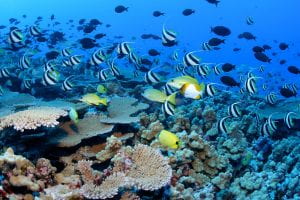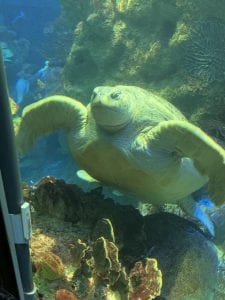As our oceans continue to grow warmer, more acidic, and lose diversity, threats to the survival of our coral reef ecosystems skyrocket. With approximately 25% of ocean fish species depending on the health of these ecosystems for survival1, it is absolutely critical to maintain them. Recognizing this threat and attempting to put an end to this loss of both organisms and ecosystems, a number of scientific minds have come together to undergo the work of coral conservation. However, this is by no means an easy battle. There are a number of threats which coral reefs face, including pollution, climate change, and unsustainable fishing practices, as well as more natural concerns like disease and predation1.

A photograph by James Watt, taken from the NOAA page on coral reef ecosystems1.
With such a large variety of issues, it can be difficult to narrow down precisely which facet of coral conservation to focus on. However, I am fortunate enough to have my father, Brian Nelson, as a direct resource of coral conservation practices and procedures. Having worked as an assistant curator at the National Aquarium in Baltimore since July 2013, a previous senior aquarist at the New England Aquarium, and working with a focus on coral husbandry since around 1995, my father holds a wide array of experience in the world of coral conservation. As such, much of the framework of my analysis of coral conservation will stem from the lens of my father’s own work. However, this does not mean that my father’s work has been performed without collaboration. In fact, coral conservation as a whole is not possible without the dedication of a large group of people.

A personal photo of Myrtle the turtle from the New England Aquarium, more specifically from within the Giant Ocean Tank. She and the other creatures who live within that tank, alongside the man-made coral, represent the work of my father and help to fuel my passion.
Sources
